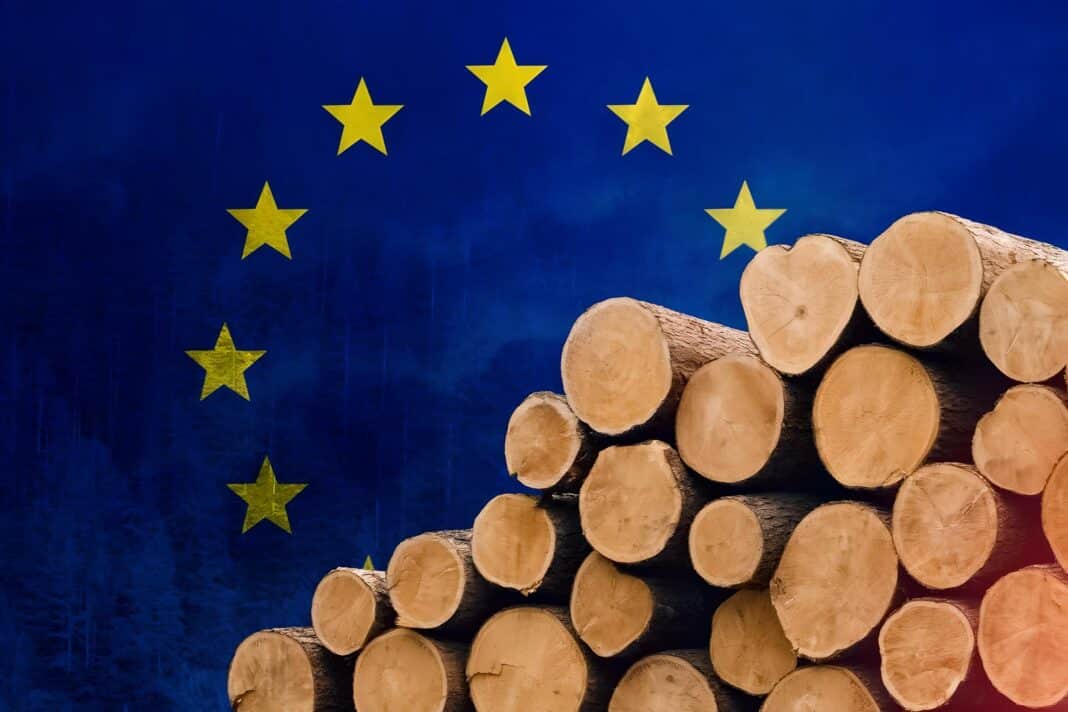Forest certification is well positioned to meet the vast majority of EU Deforestation Regulation (or EUDR) elements and is progressing towards becoming “EUDR-ready” in order to help global supply chains become deforestation-free.
That is according to PEFC, the world’s largest forest certification scheme, which tomorrow will host a new webinar outlining the steps it is now taking to ensure that more than 20,000 certified companies across 280 million hectares of forest area are ready for the new legislation.
“PEFC Alliance has made strong progress on our EUDR rollout over the last few months, and we look forward to sharing the details with you as we all move forward on this EUDR journey together,” PEFC International said.
As reported by Wood Central last year, the European Commission has ratified new legislation, enforceable from December 2024, which will be applicable for all goods produced after June 29 2023.
The new law bans the sale of coffee, cocoa, cattle, palm oil, soy, and wood related to deforestation. The EU is also introducing a benchmarking system that assigns a risk level—low, standard, or high—associated with deforestation and forest degradation both inside and outside the EU.
It comes as a new report published last month demonstrated that businesses that engage with private forest certification schemes—including PEFC and FSC—are much more likely to have deforestation-free supply chains.
“Twenty-nine of the 100% deforestation-free supply chains used certification, with FSC and PEFC the most common,” according to the report, adding that fourteen companies used the FSC National Risk Assessment and Transparency and Corruption Index.
According to the PEFC Working Group on EUDR, “PEFC certification already addresses sustainability, legality and due diligence and considers deforestation and forest degradation through our Sustainable Forest Management and Chain of Custody standards.”
Wood Central understands that PEFC and FSC are well positioned to meet the legislation’s requirements, with their holistic approach considering environmental, social, and economic aspects of sustainable forest management while addressing deforestation and timber legality.
New Report: Top 100 Pulp & Paper Producers Not EUDR-Ready!
The webinar comes amid uncertainty over the impact of the new legislation on global supply chains for certified products – not only in timber but also in rubber, pulp and paper. Last year, Wood Central revealed that the top 100 pulp and paper companies were “largely unprepared” for the new rules.
The Zoological Society of London (ZSL) data found that just 13.3% of companies provide evidence of deforestation monitoring within their operations, and just 4% monitor suppliers and contractors.
According to Sam Ross, the leading author of the report and ZSL’s Sustainable Business Project Analysis, the findings highlight a fundamental need for greater readiness before the December 2024 starting point.
“If the timber industry does not rapidly enact substantial change,” Mr Ross said, “the lack of preparedness could have serious business implications.”
“The EU is a major market for many of the companies we assessed, so there is a clear financial incentive for them to take meaningful and immediate action to tackle deforestation.”
How it Works
The regulation introduces a benchmarking system that assigns countries inside and outside the EU a low, standard, or high-risk level associated with deforestation and forest degradation.
This risk classification will guide the obligations of various operators and the authorities in member states to perform inspections and controls.

Consequently, it will streamline monitoring for high-risk countries and simplify due diligence processes for low-risk countries.
Authorities must inspect 9% of operators and traders dealing with products from high-risk countries, 3% from standard-risk countries, and 1% from low-risk countries.
This inspection aims to confirm whether they are effectively meeting the obligations stipulated by the regulation.






